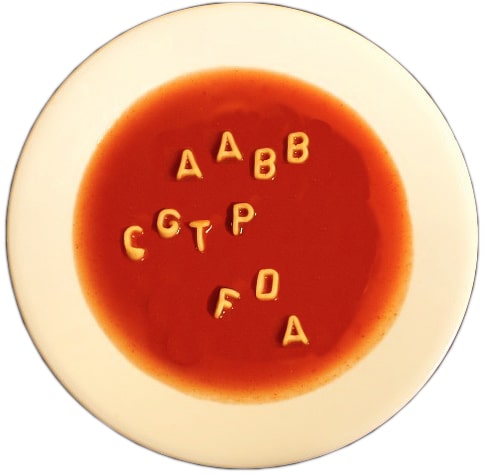AABB, CLIA, etc. It can all be a bit much, but they are more than just a bunch of letters.
Bare minimums
Here is the rundown: All cord blood banks need to be FDA-registered, which means all cord blood banks need to have or use a lab that is cGTP-compliant.

Cord blood accreditations can feel like alphabet soup
To get easier access to treatments for not only the baby but also other relatives, parents want the lab to be CLIA-compliant as well.
New York, California, New Jersey, Illinois and Maryland also require licensure in order to conduct business in and with residents of their individual states.
These state and government agencies require on-site inspections of the cord blood bank to ensure compliance with their regulations, but because of the large number of cord blood banks entering the market, some banks go longer than others without being inspected.
Above and beyond
If you want a cord blood bank that has gone the extra mile to ensure the highest standards and protocols, look for accreditation by the American Association of Blood Banks (AABB) and the Foundation for the Accreditation for Cellular Therapy (FACT). Only cord blood banks with AABB or FACT accreditation can display their respective logos on their website or printed materials.
Accreditation by the AABB is more common among cord blood banks, but you can still find some who have not gone to the extent to acquire it.
Most banks don't seek FACT accreditation because of its stringent standards. (Cryo-Cell International is the first and only private cord blood bank to attain FACT accreditation.) This is partly because FACT's standards are specific to cord blood banking.
It is also important to make sure the cord blood lab is cGMP-compliant if you want to have easier access to clinical trials and treatments for family members other than the baby.
Let’s take a closer look at each and see what they all mean:
FDA-registered and CLIA- and cGTP-compliant

Parents should know that all cord blood banks need to be FDA-registered and have a lab that is cGTP-compliant
In May 2005, the U.S. Food and Drug Administration (FDA) began regulating family cord blood banks by creating 21 Code of Federal Regulations 1271, current Good Tissue Practices (cGTP). This means, by law, all cord blood banks need to be FDA-registered and compliant with cGTP.
Registration is really an official declaration that an establishment will be conducting business as a cord blood bank. cGTP is there to ensure a cord blood bank is doing what it can to ensure collections do not become contaminated. GTPs require testing of the mother’s blood, health history questionnaire and medical screening of both the baby and mother and ultimately gives the family easier access to treatments for not only the baby but also the other family members.
The CLIA is not specific to cord blood banks but to all labs that test human samples. CLIA requires, through a federal mandate, that the lab be inspected every two years to ensure the quality of the testing methods. Testing of the mother’s blood requires a CLIA-compliant laboratory.
Licensure in NY, CA, NJ, IL & MA
Five states require licensure in order to conduct business in the state, receive collections from residents of the state or release collections to a medical facility in the state. Most require that personnel and testing procedures meet state specific guidelines. Some also have quality standards that need to be met, with New York and California being the most stringent.
cGMP-compliant
Current good manufacturing practices (cGMP) is set forth by the FDA and is a little more stringent than cGTP. cGMP labels cord blood as a drug, so cord blood labs are held to the same standards pharmaceutical companies are held to when manufacturing a drug. This means there are specific standards for everything from labeling and documentation to product standards.
cGMP is important for cord blood banks because it helps ensure the cord blood collection can be used by someone besides the donor (allogeneic) and in clinical trials.
AABB-accredited

Parents can rest assured in AABB, which assess all aspects of the way a cord blood bank handles its collections
The AABB is an international, not-for-profit association made up of nearly 2,000 institutions and 8,000 individuals involved in transfusion medicine and cellular therapies. The association is committed to improving wellness by developing and delivering standards, accreditation and educational programs that focus on optimizing patient and donor care and safety.
Medical practitioners often view AABB accreditation as one of the most important criteria when recommending a cord blood bank.
AABB accreditation follows an intensive on-site assessment by specially trained assessors who evaluate internal policies and procedures and establish that the level of medical, technical and administrative performance within the facility meets or exceeds the standards set by the AABB. The assessment includes all aspects of cord blood collection, transport, receiving, processing, storage and release.
Little background on AABB
Since its inception in 1947, the association has grown to represent much more than the “American Association of Blood Banks.” The association instituted a name change in 2005 to more accurately reflect its interests and diverse membership and is now known only by its initialism: AABB. To help people understand who it is and what it does, the AABB adopted the tag line: “Advancing Transfusion and Cellular Therapies Worldwide.” AABB remains committed to its core objectives to provide high standards of safety for patients, donors and facilities. AABB member institutions displaying the AABB accreditation logo are recognized throughout the world for providing quality products and services.
FACT-accredited

Stem cells from FACT-accredited labs have been shown to lead to better treatment outcomes
To receive FACT accreditation, a cord blood bank must demonstrate compliance through an extensive inspection and auditing process with the NETCORD-FACT International Standards for Cord Blood. These standards go into more specific requirements for the collection, processing, testing, storing and release of cord blood than AABB and have been sought by the best cancer treatment centers in the U.S.
Likely because of the high quality that FACT accreditation requires, data show that stem cells processed in FACT-accredited labs produce better treatment outcomes for patients.
Little background on FACT
In December 1994, the International Society for Cellular Therapy (ISCT) and the American Society for Blood and Marrow Transplantation (ASBMT) merged their standards into a single document covering all aspects of hematopoietic stem cell therapy. The two societies established the Foundation for the Accreditation for Cellular Therapy in order to develop a voluntary inspection and accreditation program based on the joint standards. The FACT promotes quality medical and laboratory practice of cellular therapy through its peer-developed standards and voluntary inspection and accreditation program.
In 2000, recognizing the global impact of cord blood banking and transplantation, it partnered with NetCord to develop international standards for cord blood collection, processing, testing, banking, selection and release. The NetCord foundation is an international network of non-profit public cord blood banks created to promote the establishment of high quality cord blood banks and improve the quality of cord blood products through study and research.
Click below to learn about Cryo-Cell's accreditations and how it is the first and only private cord blood bank to acquire FACT accreditation.